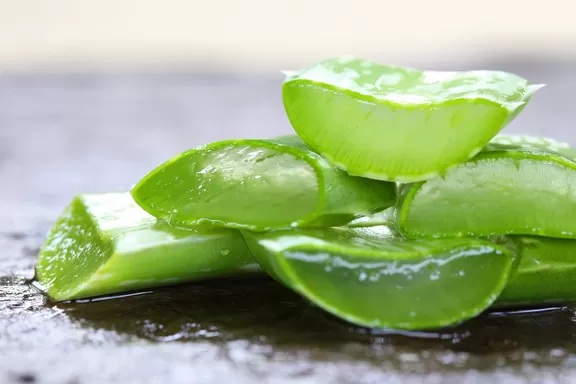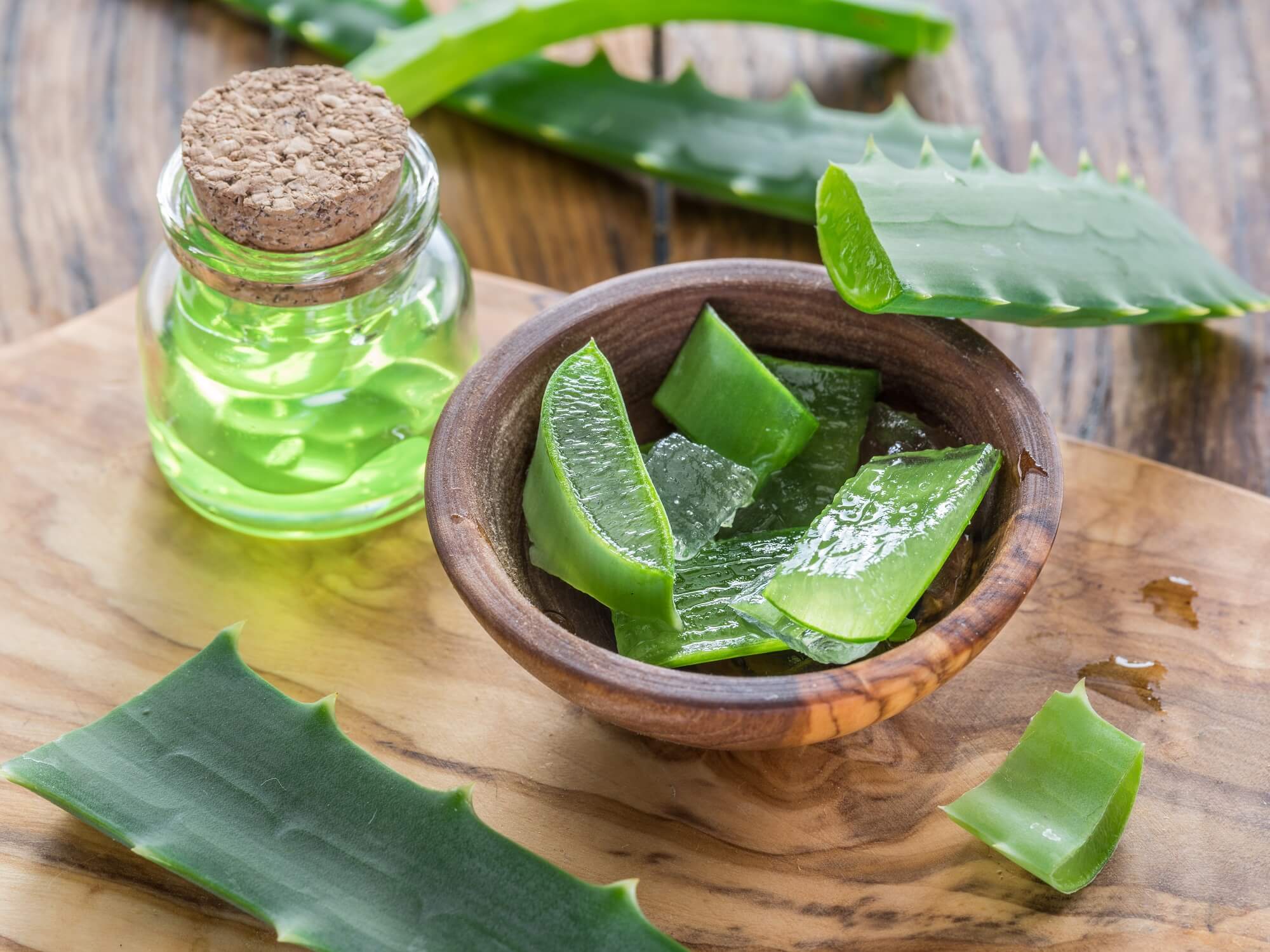
Aloe vera (Aloe barbadensis) is effective at stopping the growth of many different bacteria. As research shows, it is therefore a capable antibacterial. And, this plant has been used since ancient times. As research will demonstrate, it is able to inhibit (stop the growth of) bacteria that cause most skin infections. So if you have a burn or wound on the skin, this plant can help fight bacteria while it soothes the area.
It should be noted that you might need to make an ethanolic (drinking alcohol, also called ethanol) extract of this herb to see the full antibacterial effect. Aloe vera gel by itself appears to be a weaker antibacterial than its ethanolic extract.
In this article, we will cover research that used Aloe vera against various strains of bacteria. To help elucidate which bacteria are important to know if Aloe vera is good for, we will discuss the prevalence of bacteria that infect the skin. There are, of course, very many different bacteria; and, they all respond differently to drugs and natural remedies.
At the end of this article, you should see that Aloe vera has real value as an antibacterial herb. And, you will know which bacteria are the species that cause perhaps the most skin infections.
Other Benefits of Aloe Vera
Aloe vera has antimicrobial, anti-inflammatory, and immune supporting properties.(source 8) Aloe has been used historically by Native Americans for intestinal and stomach problems such as constipation, colitis, colon disorders, and hemorrhoids. It is thought to be anti-inflammatory, an improver of circulation to an area, and a breaker and remover of dead tissue.(source 11)
Interestingly, the skin absorbs Aloe vera up to 4 times faster than water. It may be that it helps the skin’s pores to open and take in moisture. Additionally, phytochemicals (plant chemicals) in Aloe vera have been demonstrated to improve the function of the immune system.(source 11)
Dr. John Herzog (MD)
Dr. John Herzog, a "survival surgeon" from Maine explains what home remedies work best in a crisis situation.
This may be important in the event you require first-aid or are in an emergency situation without easy access to a hospital. Dr. John Herzog has assembled a large collection of home remedies for such scenarios.

Bacterial Infections of the Skin & Wounds
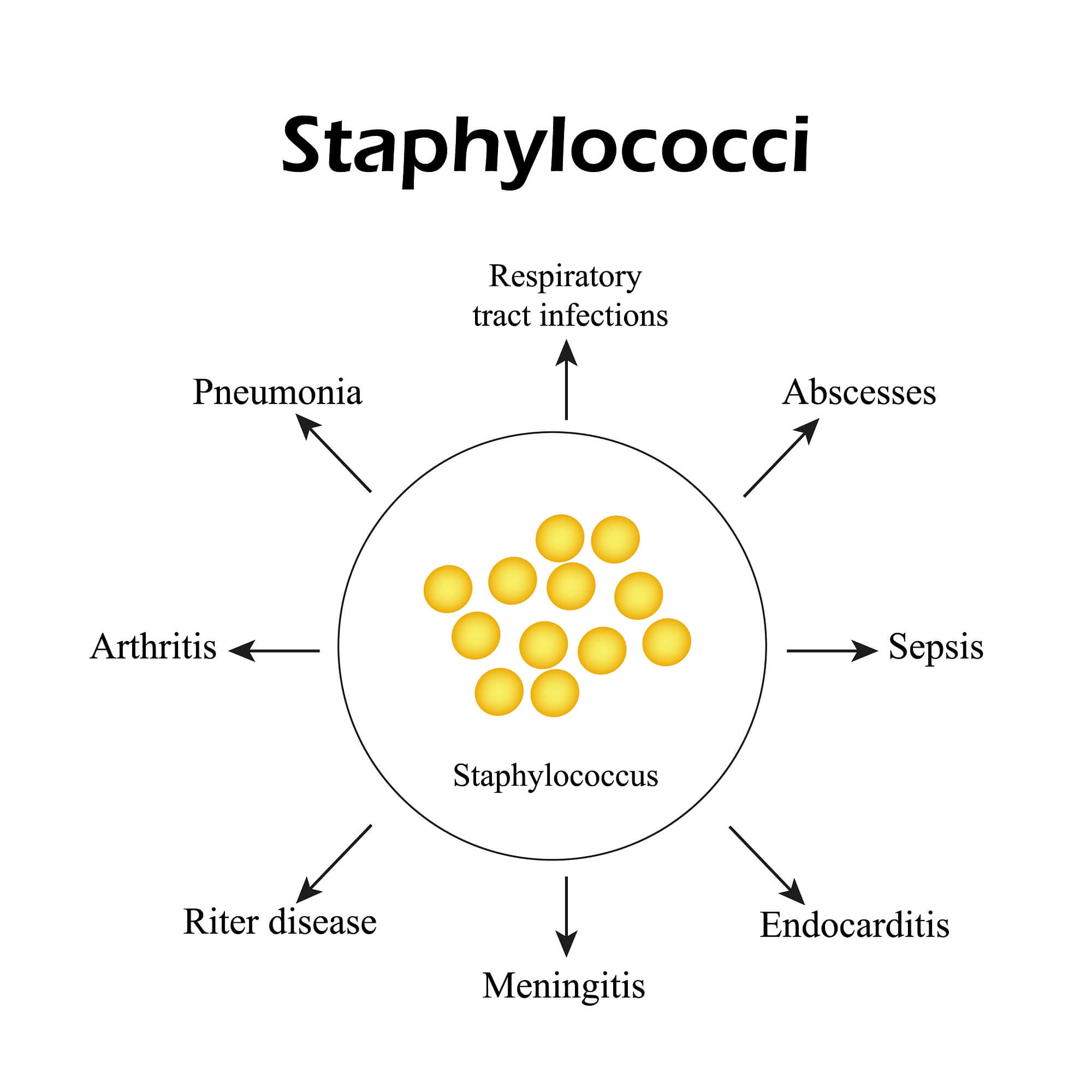
Since there are many different types of bacteria, it is not feasible to cover Aloe vera’s effects on all of them! So, we will investigate some of the most common acute skin infectious bacteria.
The term "acute" refers to infections that occur suddenly; such as getting a cut or scrape and having it become infected. It is probable that you are wondering how Aloe vera will affect common bacteria that infect minor skin wounds; therefore you are interested in acute skin infections.
Conversely, "chronic" infections are those that persist for a long period of time. According to the U.S. National Cancer Institute,(source 3) a chronic infection is: "A disease or condition that usually lasts for 3 months or longer and may get worse over time."
A 2019 study in Clinical Infectious Diseases(source 1) discussed the prevalence of acute skin infections in the United States. According to this study Staphylococcus aureus (S. aureus) and Streptococcus spp. are the most common causes of acute skin infections.
The study cites another large observational study evaluating the microbiology of skin infections within a United States health plan. Between 2009 and 2011, among 376,262 plan members, 471,550 skin and soft tissue infections occurred. More than half of these infections were cellulitis or abscess.
Of these infections, only 23% were analyzed by culturing the bacteria. Of these 23% that were cultured, 81% of which were S. aureus. Of the total S. aureus infections 46% of them were Methicillin-resistant Staphylococcus aureus (MRSA; which is “a cause of staph infection that is difficult to treat because of resistance to some antibiotics.”(source 4)).
This study discussed some factors that can predispose you to a MRSA infection:
Importantly, previous history of MRSA infection, advanced age, chronic open wounds, underlying chronic disease, and frequent contact with a healthcare facility were risk factors for MRSA [skin and soft tissue infections]...
Clinical Infectious Diseases [68.Supplement_3 (2019): S193-S199]

Comprehensive Herbalist School
Dr. Patrick Jones, founder of the HomeGrown Herbalist School of Botanical Medicine has been a practicing veterinarian for over 25 years. He is also a clinical herbalist and traditional naturopath.
Kevin Harrington, Original Shark from ABC’s Shark Tank, stands behind Dr. Patrick Jones and HomeGrown Herbalist.
Learn More
Comprehensive Herbalist School
Dr. Patrick Jones, founder of the HomeGrown Herbalist School of Botanical Medicine has been a practicing veterinarian for over 25 years. He is also a clinical herbalist and traditional naturopath.
Kevin Harrington, Original Shark from ABC’s Shark Tank, stands behind Dr. Patrick Jones and HomeGrown Herbalist.Learn More
Pathogenic Bacteria Infecting Wounds
A 2000 study in the Journal of Clinical Microbiology(source 2) gives a good idea how to approximate the most common bacteria that infect wounds. The study used 6 years worth of data which included 676 surgery patients that had signs and symptoms of wound infections. Of these patients, bacteria was able to be taken from the wounds of 614 individuals.
A single causal agent was present in 271 individuals, more than one causal agent was found in 343, and no causal agent in 68 individuals. The study found more aerobic bacteria in the wounds.
The study listed the prevalence of bacterial species infecting the surgical wounds. The following bacterial pathogens were present in the surgery patient’s wounds:
- Staphylococcus aureus (191 patients, 28.2%)
- Pseudomonas aeruginosa (170 patients, 25.2%)
- Escherichia coli (53 patients, 7.8%)
- Staphylococcus epidermidis (48 patients, 7.1%)
- Enterococcus faecalis (38 patients, 5.6%)
Claire Goodall’s Amazing Guide
Clair Goodall is a bee-obsessed, natural medicine convert from Minnesota (USA). And, she does keep bees!
Clair has created 350+ page book documenting how to replace the toxic products and medications in your home with healthier, all-natural alternatives.

How Aloe vera Affects Common Bacteria of Skin Infections
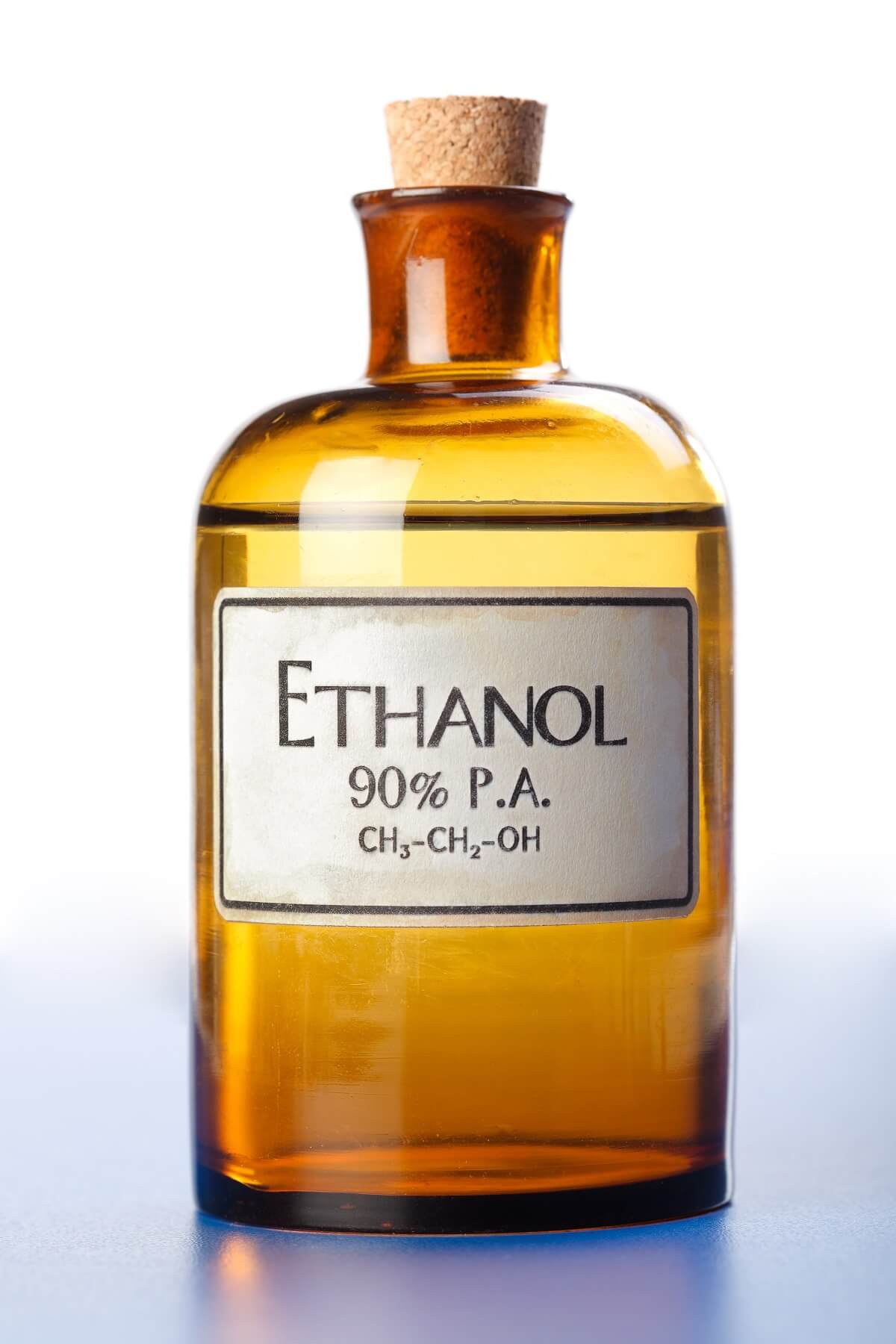
Since it is impractical to discuss Aloe vera’s effect on most pathogenic bacteria, and research is lacking, it is necessary to concentrate on just prominent infectious bacteria. And, if an herb works against a variety of bacteria, it is possible to infer (or make an educated guess) it may work on a broader range of bacteria.
Staphylococcus aureus
A 2009 study in the African Journal of Microbiology Research(source 5) tested fabric treated with Aloe vera extract against S. aureus bacteria to determine if the treatment would protect the fabric from the bacteria. This study can be used to approximate how residual amounts of Aloe vera can affect this bacteria.
The study ground up Aloe vera leaves and extracted them with methanol and other procedures to produce their extract. The extract was added to water at concentrations of 1, 2, 3, 4, and 5 grams per liter. Fabrics were then immersed in the solution of water and Aloe vera extract for five minutes repeatedly until a wet pickup of 80% weight of the fabric was achieved. Next, the fabrics were put through a drying procedure.
1 gram of the fabric was then placed in a test tube with S. aureus. The reduction of S. aureus from contact with the fabric was then calculated.
The study found the fabric drastically reduced the amount of S. aureus bacteria. Fabric soaked in 1 gram per Liter of the extract reduced the bacterial colonies by 97%. Fabric exposed to the 5 gram per liter concentration of the extract reduced S. aureus colonies by 99.1%. The study concluded that just 5 grams per liter of Aloe vera extract highly reduced the number of bacterial colonies and showed a clear zone of inhibition (ZOI; space around a test substance in which a microorganism will not grow).
A 2019 study, published in the Mymensingh Medical Journal,(source 6) was conducted to determine the antibacterial ability of aloe vera extract against several bacteria; one of which was S. aureus.
The study used an ethanolic extract (made from drinking alcohol) of Aloe vera leaf gel in their experiments. The extract was tested against bacteria at concentrations of 100, 200, 300, 400 and 500 mcg/mL (micrograms per milliliter; one microgram is a thousandth of a milligram).
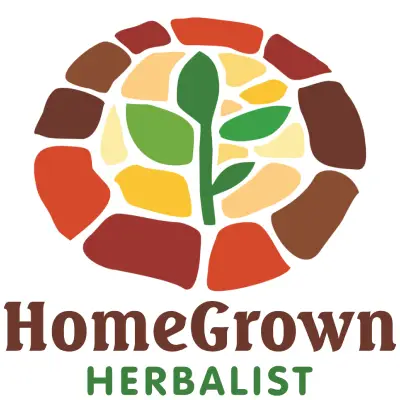
HomeGrown Herbalist Herb Shoppe
Owner of HomeGrown Herbalist Dr. Patrick Jones is a practicing veterinarian, Clinical Herbalist, and traditional naturopath. He owns and operates Fairview Animal Hospital in Buhl, ID.
Their herb shoppe provides herbs, essential oils, and tools. If you have some time, check it out!
Learn More
HomeGrown Herbalist Herb Shoppe
Owner of HomeGrown Herbalist Dr. Patrick Jones is a practicing veterinarian, Clinical Herbalist, and traditional naturopath. He owns and operates Fairview Animal Hospital in Buhl, ID.
Their herb shoppe provides herbs, essential oils, and tools. If you have some time, check it out!Learn More
The study found that the zone of inhibition the extract created for S. aureus was 20 mm at a concentration of 500 mcg/mL. The study also found the following minimum inhibitory concentrations (MIC; the smallest amount of a substance that stops the growth of a microorganism):
- MIC for S. aureus: 500 mcg/mL
- MIC for Pseudomonas aeruginosa: 650 mcg/mL
- MIC for Escherichia coli: 650 mcg/mL
- MIC for Klebsiella pneumoniae: 600 mcg/mL
The study made the following conclusions:
From the study it is clearly observed that ethanolic extract of Aloe vera leaf gel possesses antibacterial effect against the test pathogens. Further studies are required to detect and isolate the biologically active ingredients present in the Aloe vera leaves which are responsible for this antibacterial effect. Hopefully, that would lead to the discovery of new and more potent antimicrobial agents originated from Aloe vera.
Mymensingh Medical Journal: MMJ [28.3 (2019): 490-496]
A 2005 study in the Indian Journal of Microbiology(source 7) also examined the antibacterial effect of Aloe vera against S. aureus. The study used a gel made from raw Aloe vera and acetone and methanol extracts of this herb.
The study made their own gel from the leaves of Aloe vera. The green hard outside of the leaves was removed and the inside parts were homogenized into a gel. The study also used methanol and acetone extracts of Aloe vera. Both of these extracts were made from the powder of the dried Aloe vera gel.
The study determined the MIC of the leaf gel against S. aureus. To do this, concentrations ranging from 5 to 90% were placed in nutrient agar, placed on petri dishes, and then inoculated with the bacteria. This should give a good indication of how aloe vera gel will affect S. aureus when you put it on your skin.
The following MIC (100% inhibition) values were reported by the study:
- For the Aloe vera gel: MIC of a 50% concentration
- For the Aloe vera acetone extract: MIC of 1 mg/mL
- For the Aloe vera methanol extract: MIC of 3 mg/mL
Streptococcus
A 2016 study in the Journal of Clinical and Diagnostic Research(source 8) sought to evaluate the antimicrobial ability of varying concentrations of Aloe vera gel against pathogenic oral bacteria. Included in these examined bacteria were Streptococcus mutans (S. mutans) and S. aureus.
The study made their own Aloe vera extract. To do this, the thick skin of the leaves was removed and the solid mucilaginous gel of the leaves was taken. Next, 10 mL of the gel was mixed with 100 mL of 2% Dimethyl Sulfoxide (DMSO). The study also states that DMSO is a solvent that has no antimicrobial effect.
100% Aloe vera gel showed a zone of inhibition of 6.8 mm for S. mutans and 6.6 mm for S. aureus. Comparatively, 30 mcg of Ciprofloxacin (brand names Cetraxal, Cipro XR, Otiprio; it is a drug used to treat bacterial infections) produced a ZOI of 6.8 mm against S. mutans and a ZOI of 7.3 against S. aureus.
Lower concentrations of 25% and less of Aloe vera did not produce any ZOI against any bacteria.
A 2003 study, published in Antimicrobial Agents and Chemotherapy,(source 9) investigated how Aloe vera would affect Streptococcus pyogenes (S. pyogenes) and Shigella flexneri (S. flexneri). The study chose to focus on how the inner gel of this herb’s leaves would affect these bacteria.
For their experiments, the study reconstituted freeze dried inner gel of the aloe vera plant. Effective growth inhibition for up to 24 hours, was produced with concentrations of more than 25 mg / mL of Aloe vera for S. pyogenes and 100 mg / mL of Aloe vera per ml for S. flexneri.
The following average ZOI’s were produced by different dilutions of the gel:
ZOI’s for S. flexneri
- 1:2 Dilution: Produced a ZOI of 2.8 cm
- 1:4 Dilution: Produced a ZOI of 2.0 cm
- 1:8 Dilution: Produced a ZOI of 1.5 cm
- 1:16 Dilution: Produced a ZOI of 1.3 cm
- 1:32 Dilution: Produced a ZOI of 0.9 cm
Pseudomonas aeruginosa
A 2015 study in Chemotherapy Research and Practice(source 10) tested Aloe vera against multidrug-resistant (MDR) Pseudomonas aeruginosa (P. aeruginosa) that was isolated from patients with burn wound infections.
During a 6 month period, 140 clinical isolates of P. aeruginosa from patients admitted to burn wards. Testing revealed that 47 (33.6%) of the isolates were MDR P. aeruginosa.
The Aloe vera used was made from the inner flesh of the leaves; and, was mixed with one liter of 2% DMSO. This mixture was then used to perform MIC testing.
The study found that all but 5 strains of MDR P. aeruginosa were inhibited by Aloe vera gel extract concentrations of 400 mcg / mL or more. The 5 MDR isolates that were not inhibited at this concentration had an MIC of 800 mcg / mL. And, undiluted Aloe vera gel had an inhibitory effect on all MDR P. aeruginosa strains.
Escherichia coli & Other Bacteria
A 2009 study in Brazilian Journal of Microbiology(source 11) investigated two Aloe vera extract’s ability to inhibit several bacteria; one of which was Escherichia coli (E. coli). This study shows how making your own Aloe vera extract with a strong alcoholic liquor (such as grain alcohol) will work as an antibacterial topical treatment.
Again note that the study’s results are given as zone of inhibition (ZOI); which is the area around a substance that a microorganism will not grow in. The ZOI demonstrates the power of a substance to inhibit the growth of tested microorganisms.
The study synthesized their own aloe vera gel from the leaves of this herb. The leaves were washed, surface sterilized, and the outer layer was peeled off. The inner gel was then drained out to form a slurry via mortar and pestle.
The gel produced by this process was then used to create ethanol and methanol extracts. The leaf gel was dried and powdered and then soaked in the solvents. Further processing was then carried out to arrive at the final extracts.
The following ZOI’s were produced by the ethanol extract against E. coli and other bacteria:
Gram-positive Bacteria
- Bacillus cereus: ZOI of 23.33 mm
- Bacillus subtilis: ZOI of 15.00 mm
- Staphylococcus aureus: ZOI of 15.66 mm
- Streptococcus pyogenes: ZOI of 16.00 mm
Gram-negative Bacteria
- Escherichia coli: ZOI of 12.66 mm
- Pseudomonas aeruginosa: ZOI of 23.00 mm
- Klebsiella pneumoniae: ZOI of 22.66 mm
- Salmonella typhi: ZOI of 14.66 mm
This research demonstrates that ethanolic Aloe vera extract is able to stop the growth of E. coli and other bacteria. Similar extracts could be produced at home with the help of a strong liquor like grain alcohol (as ethanol is another name for the type of alcohol in beer, wine, and liquor). The study made the following concluding remarks:
As global antibiotic resistance by bacteria is becoming an interesting public health concern and the race to discover the new antibacterial agent is on, Aloe vera gel along with its identified compounds with promising antibacterial activity could be used as an alternative herbal remedy. Further, these compounds also have been reported to have a number of other advantages on human health along with little side effects in the overdoses.
Brazilian Journal of Microbiology [40.4 (2009): 906]
Another study, published in 2010 in Applied Biochemistry and Biotechnology,(source 12) tested water and ethanol extracts of Aloe vera on several different bacteria. One of these bacteria was E. coli. This study is a good example of Aloe vera’s antibacterial ability as it included many different bacteria.
The study made their extract from the leaves of Aloe vera. The material taken from the leaves was homogenized and extracted with either water or 95% ethanol. Thus, the researchers produced aqueous and ethanolic extracts of this herb.
The following ZOI's were produced by the water extract:
- Enterococcus bovis: 4.0 mm
- Staphylococcus aureus: 3.0 mm
- Escherichia coli: 3.0 mm
- Proteus vulgaris: 4.0 mm
- Proteus mirabilis: 4.0 mm
- Pseudomonas aeruginosa: 4.0 mm
- Klebsiella pneumoniae: 4.0 mm
- Morganella morganii: 4.0 mm
The following ZOI's were produced by the ethanolic extract:
- Enterococcus bovis: approximately 30.0 mm
- Staphylococcus aureus: approximately 20.67 mm
- Escherichia coli: approximately 9.67 mm
- Proteus vulgaris: approximately 17.67 mm
- Proteus mirabilis: approximately 19.33 mm
- Pseudomonas aeruginosa: approximately 26.33 mm
- Klebsiella pneumoniae: approximately 8.0 mm
- Morganella morganii: approximately 24.0 mm
The study concluded that Aloe vera has excellent potential as an antibacterial herb. Aloe barbadensis has anthraquinones as an active component. Anthraquinones are a structural analog (a compound having a structure similar to that of another compound, yet different due to a certain component) of tetracycline.
Tetracycline is an antibiotic used to treat a wide array of bacterial infections. Anthraquinones act similarly to tetracycline by stopping bacterial protein synthesis via blocking the ribosomal A site.
Aloe Vera is a Capable Antibacterial Compound
Given all the research demonstrating Aloe vera can inhibit (stop the growth of) many common bacteria; it can be concluded that this herb is antibacterial. The key thing to remember is that ethanolic extracts seemed to perform better than those made with water. As a result, for maximum benefit you may want to make your own ethanolic extract of this herb.
Just make sure you limit your use of an ethanolic aloe vera extract to topical applications. This plant should not be ingested directly, as it is a very powerful laxative. Commercial preparations should be used internally; as they have the potent laxatives diminished or removed.

Comprehensive Herbalist School
Dr. Patrick Jones, founder of the HomeGrown Herbalist School of Botanical Medicine has been a practicing veterinarian for over 25 years. He is also a clinical herbalist and traditional naturopath.
Kevin Harrington, Original Shark from ABC’s Shark Tank, stands behind Dr. Patrick Jones and HomeGrown Herbalist.
Learn More
Comprehensive Herbalist School
Dr. Patrick Jones, founder of the HomeGrown Herbalist School of Botanical Medicine has been a practicing veterinarian for over 25 years. He is also a clinical herbalist and traditional naturopath.
Kevin Harrington, Original Shark from ABC’s Shark Tank, stands behind Dr. Patrick Jones and HomeGrown Herbalist.Learn More
The Possible Side Effects of Aloe vera
The side effects of Aloe vera is a topic that is beyond the scope of this article. Herbsey does have an entire article on this topic. If you want an evidence based overview of side effects and contraindications, check out the article on this: Aloe vera Side Effects.
Aloe vera is an herb that has been used since antiquity; hence, it has a long history of use by many culture’s traditional medicine. And, as research will demonstrate, topical application is generally well tolerated. The most probable side effects for external use are due to allergic reactions.
Internal use can be done, but there are more precautions to be aware of. And, prolonged ingestion of Aloe vera, especially the inner juice (also known as the “latex”), should be avoided. The latex is such a powerful laxative that you really need to exercise caution with it!
Some quick guidelines for internal use, i.e. cases where Aloe vera should be avoided:
- You are pregnant
- You are taking anticoagulant medications
- You have kidney or cardiac problems
- You have any known allergy to plants in the lily (Liliaceae) family
About the Author
Geoff Kent is a natural medicine enthusiast who has been researching and writing about natural medicine since 2008. Geoff is primarily a web developer, but also researches and authors written and video content about natural health. Geoff has a bachelor’s degree in Management Information Systems from the University of Northern Iowa.
More on Geoff KentImportant Disclosures & Disclaimers
It is important to use the information you find on Herbsey.com in the right way. Also for legal reasons, these disclaimers and disclosures are necessary. For further information about each, feel free to click the link provided to the page on this website that provides more information.
Medical Disclaimer
The information on this website is not a prescription for anyone. This information is for informational or educational purposes only, and is not a substitute for professional medical advice or consultations with healthcare professionals.
Advertisement Disclosure
Some of the links provided on this article and website are affiliate links. If you purchase a product after clicking on these links, Herbsey.com will earn a commission. Herbsey.com promotes various products through advertisement and text links. For more information: Our Advertisements.





